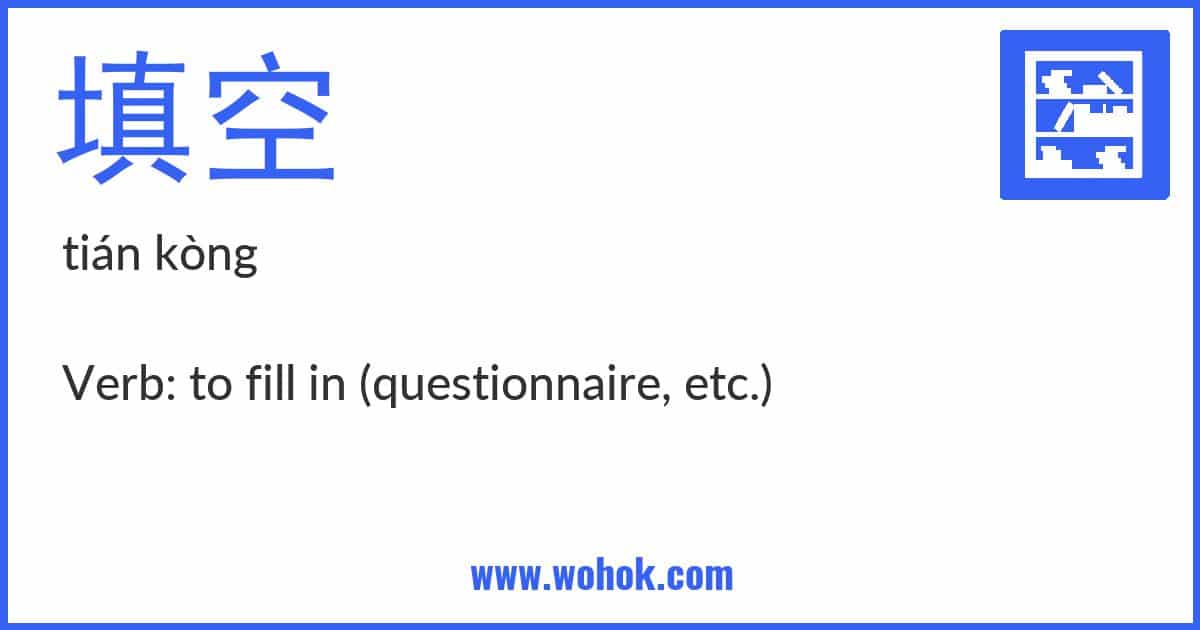The Chinese word 填空 means “fill in the blanks” in English. It is commonly used in language learning and testing contexts, where students are asked to complete sentences or paragraphs by filling in missing words or phrases. This exercise is designed to test their understanding of grammar and vocabulary, as well as their ability to use context clues to infer the correct answers.
Translation
Verb: to fill in (questionnaire, etc.)
Pronunciation
Example Sentences
| Chinese | Pinyin | Engish |
|---|---|---|
| 他在考试时总是能够很快地填空 | tā zài kǎoshì shí zǒng shì nénggòu hěn kuài de tiánkòng | He is always able to fill in the blanks quickly during exams |
| 这篇文章有一些空白需要填空 | zhè piān wénzhāng yǒu yīxiē kòngbái xūyào tiánkòng | This article has some blanks that need to be filled in |
| 学生们需要根据上下文来填空 | xuéshēngmen xūyào gēnjù shàngxiàwén lái tiánkòng | Students need to fill in the blanks based on context |
| 这个题目很难,我只能填对了一半 | zhège tímù hěn nán, wǒ zhǐ néng tián duìle yībàn | This question is difficult, I could only fill in half of it correctly |
| 我们需要用正确的词语来填空 | wǒmen xūyào yòng zhèngquè de cíyǔ lái tiánkòng | We need to use the correct words to fill in the blanks |
| 这个句子需要你填空,但是你需要先理解它的意思 | zhège jùzǐ xūyào nǐ tiánkòng, dànshì nǐ xūyào xiān lǐjiě tā de yìsi | This sentence requires you to fill in the blank, but you need to understand its meaning first |
HSK
填空 is part of HSK Level 4 in both HSK 2.0 and HSK 3.0.
Learning Card


